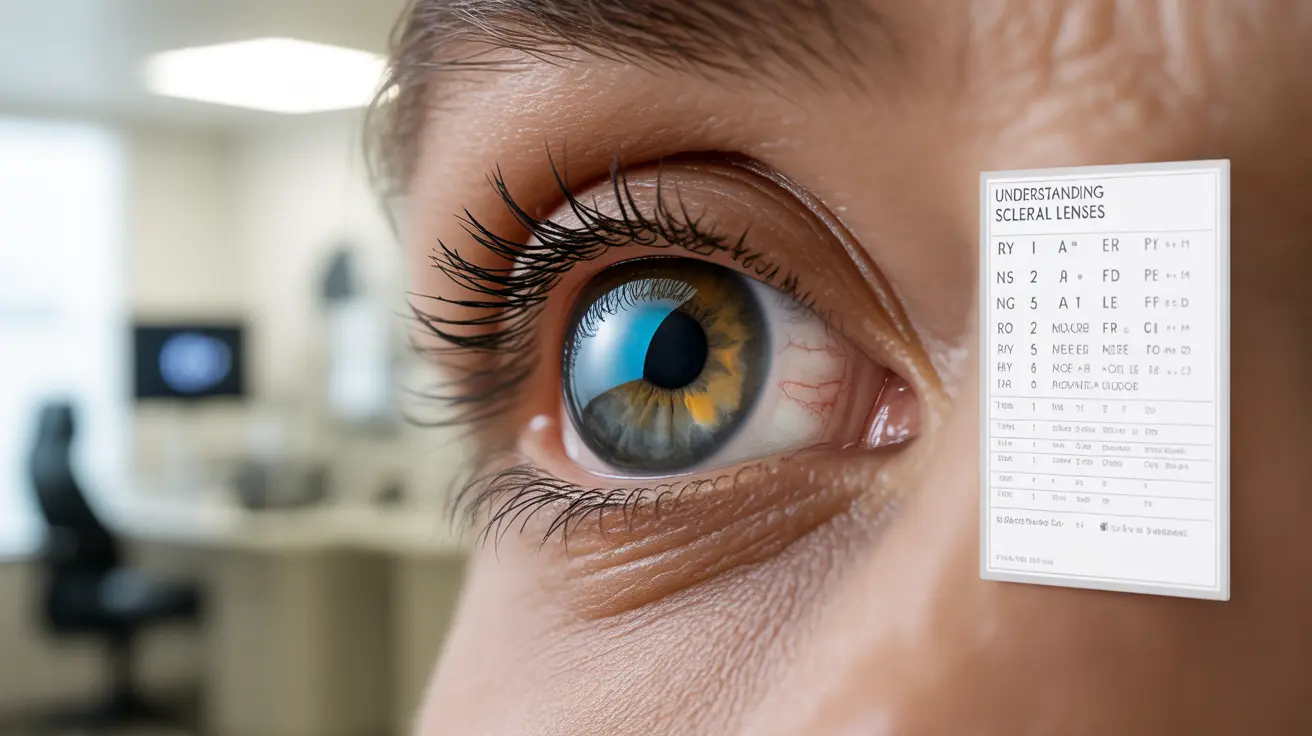For individuals struggling with severe dry eye syndrome, finding effective relief can be challenging. Scleral lenses represent an innovative treatment option that's gaining recognition among eye care professionals for their ability to provide sustained comfort and vision correction for those with chronic dry eye conditions.
These specialized contact lenses offer a unique approach to managing dry eye symptoms by creating a protective reservoir of fluid between the lens and the eye's surface, providing continuous hydration throughout the day. Understanding how scleral lenses work and who might benefit from them is crucial for those seeking alternatives to traditional dry eye treatments.
Understanding Scleral Lenses and Their Design
Scleral lenses are large-diameter rigid gas permeable contact lenses that vault over the entire cornea and rest on the white part of the eye (sclera). Unlike traditional contact lenses, they create a dome-like space over the cornea that fills with preservative-free saline solution, providing constant moisture to the eye's surface.
These specialized lenses are custom-designed for each patient, taking into account the unique shape of their eye and specific vision needs. The precise fitting ensures optimal comfort and visual acuity while maintaining a protective environment for the cornea.
Benefits of Scleral Lenses for Dry Eye Management
Scleral lenses offer several significant advantages for dry eye patients:
- Continuous corneal hydration throughout the day
- Protection from environmental irritants
- Reduced friction between the eyelid and cornea
- Improved vision stability
- Enhanced comfort compared to traditional contact lenses
The unique design of scleral lenses makes them particularly effective for patients who have found limited success with other dry eye treatments or those who require both vision correction and dry eye management.
The Scleral Lens Fitting Process
Getting fitted for scleral lenses requires specialized expertise and typically involves several steps:
Initial Consultation and Evaluation
During the first visit, your eye care professional will conduct a comprehensive eye examination and evaluate your specific dry eye condition. They will take detailed measurements of your cornea using advanced imaging technology to ensure the most precise fit possible.
Custom Lens Design and Trial
Based on these measurements, custom lenses are designed and manufactured. Patients often go through a trial period with diagnostic lenses to determine the optimal fit and make any necessary adjustments.
Training and Follow-up Care
Proper insertion, removal, and care techniques are essential for successful scleral lens wear. Your eye care provider will provide thorough training and schedule regular follow-up appointments to monitor your progress and make any needed modifications.
Cost and Insurance Considerations
The investment in scleral lenses typically ranges from $2,000 to $5,000 per pair. While this may seem significant, many patients find the benefits justify the cost. Insurance coverage varies by provider and plan, with some plans offering partial coverage when scleral lenses are medically necessary for dry eye treatment.
Frequently Asked Questions
How do scleral lenses help relieve symptoms of severe dry eye?
Scleral lenses create a protective dome filled with artificial tears over the cornea, providing constant moisture and preventing evaporation. This continuous hydration helps alleviate dry eye symptoms while protecting the eye's surface from environmental irritants.
Who is a good candidate for scleral lenses to treat dry eye syndrome?
Ideal candidates include individuals with severe dry eye that hasn't responded well to conventional treatments, those with irregular corneas, and patients with conditions like Sjögren's syndrome or graft-versus-host disease. Your eye care professional can determine if you're a suitable candidate through a comprehensive evaluation.
What are the benefits and potential risks of using scleral lenses for dry eye?
Benefits include constant corneal hydration, improved vision, and reduced dry eye symptoms. Potential risks may include infection if proper hygiene isn't maintained, lens fogging, and initial adaptation challenges. However, these risks are minimized with proper care and professional oversight.
How is the fitting process done for scleral lenses designed for dry eye?
The fitting process involves detailed corneal mapping, trial fittings with diagnostic lenses, and custom lens design based on your eye's specific measurements. Multiple appointments are typically needed to achieve the optimal fit.
Are scleral lenses covered by insurance for dry eye treatment, and what is their typical cost?
Coverage varies by insurance provider and plan. Some plans may cover a portion of the cost when scleral lenses are deemed medically necessary. The typical cost ranges from $2,000 to $5,000 per pair, including the fitting process and follow-up care.




